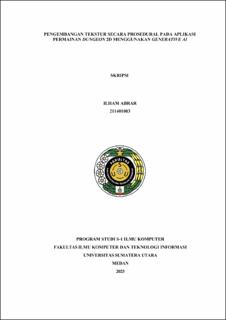| dc.description.abstract | The development of the 2D roguelike dungeon genre is well-known for its ability to generate random level layouts through procedural content generation. However, it still heavily relies on static visual assets, which limits aesthetic variety. Conventional approaches, such as manual creation by designers or algorithmic methods like Perlin Noise, have proven either inefficient or prone to producing repetitive visual patterns. To address these challenges, this research proposes a hybrid solution integrating Large Language Models (LLM) and Generative AI to enable the dynamic creation of unique textures based on player input. The system allows players to provide simple one- or two-word degeneions, which the LLM then transforms into descriptive prompts. These prompts are sent to a Generative AI API to produce textures that are immediately applied in-game. This system was implemented in a 2D roguelike dungeon game developed using the Unity Engine, where players have active influence over the game's visual environment. LLM is employed to generate texture descriptions from player input, while a caching mechanism is applied to optimize processing efficiency. The effectiveness of this approach was evaluated through user satisfaction surveys on the automated texture generation system. The results demonstrate that the dungeon level generation system using Quad Mesh successfully delivers visuals that dynamically align with the player's theme, the integration of LLM and the Generative AI API produces relevant and high-quality prompts and textures from player input, the caching mechanism effectively enhances performance by reducing repetitive API calls and accelerating texture loading, and tests across different themes show the system generates appropriate texture variations with interactive visual application. Consequently, this enriches the player's experience and fosters deeper engagement. | en_US |


